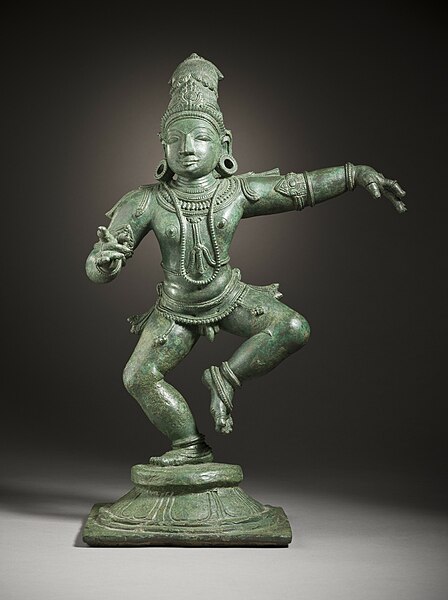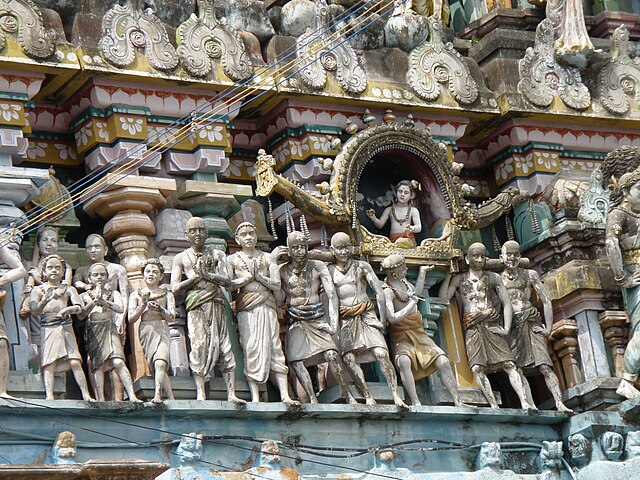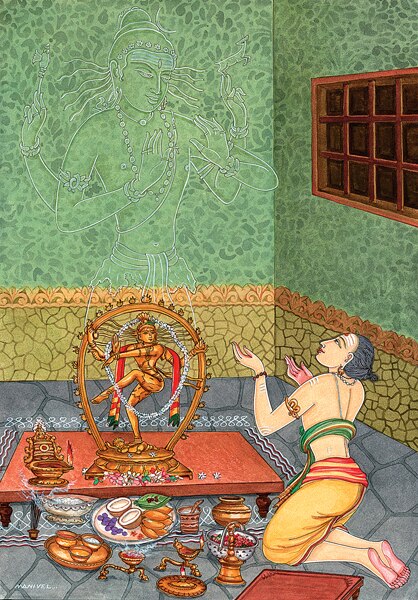Sambandar, also referred to as Tirujnana Sambandar, was a Shaiva poet-saint of Tamil Nadu who lived sometime in the 7th century CE. According to the Tamil Shaiva tradition, he composed an oeuvre of 16,000 hymns in complex meters, of which 383 (384) hymns with 4,181 stanzas have survived. These narrate an intense loving devotion (bhakti) to the Hindu god Shiva. Sambandar died when he was sixteen years of age. The surviving compositions of the poet-saint are preserved in the first three volumes of the Tirumurai, and provide a part of the philosophical foundation of Shaiva Siddhanta.
A copper alloy sculpture of Sambandar with forefinger pointing slightly up (symbolically towards Parvati and Shiva)
Amirthakadaieeshwarar temple relief depicting Appar bearing Sambandar's palanquin
The Child Saint Sambandar, chola bronze, 12th century India, Freer Gallery of Art, Washington DC
Sambandar (Wooden Image), ASI Museum, Vellore
Shaivism is one of the major Hindu traditions, which worships Shiva as the Supreme Being. One of the largest Hindu denominations, it incorporates many sub-traditions ranging from devotional dualistic theism such as Shaiva Siddhanta to yoga-orientated monistic non-theism such as Kashmiri Shaivism. It considers both the Vedas and the Agama texts as important sources of theology. According to a 2010 estimate by Johnson and Grim, Shaivism is the second-largest Hindu sect, constituting about 253 million or 26.6% of Hindus.
Shiva (above) is the primary deity of Shaivism.
The "Pashupati" seal from the Indus Valley civilisation.
Kushan coin of Vima Kadphises (2nd century CE), with a possible Shiva, holding a trident, in ithyphallic state and next to a bull, his mount, as in Shaivism. The deity was described by the later Kushans in their coinage as "Oesho", a possibly kushan deity.
Shiva (middle) is the supreme being of Shaivism, accompanied by his son Ganesha (left) and consort Parvati (right). Painting by Raja Ravi Varma.








